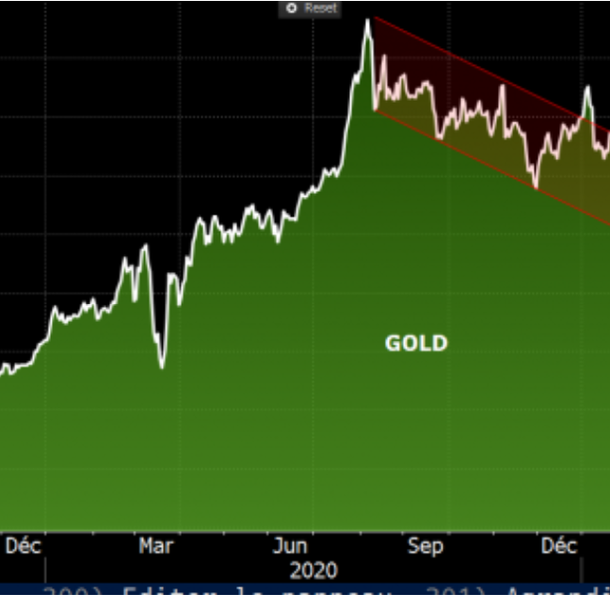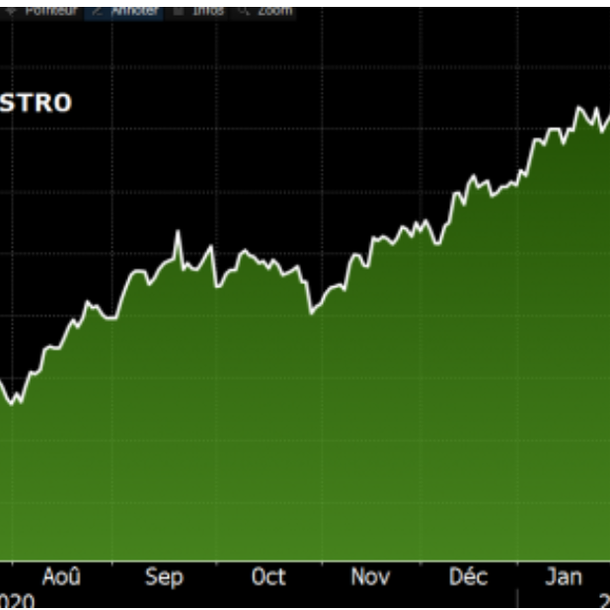|
Monday March 1 | Weekly market update |
 | Torn between good corporate results and inflationary fears, materialized by the surge in U.S. long rates, stock markets were nervous last week and ended on a bearish note. In particular, financial stocks, oil companies and cyclicals regained ground, while technology stocks suffered heavy outflows, following in the wake of their American counterparts. |
| Indexes Over the past week, most of the major indices have lost ground. In Asia, the Nikkei fell 3.5% over the last five days, with heavy clearances on Friday (-3.99%). The Hang Seng dropped 5.3% and the Shanghai Composite lost 5.1%. In Europe, the CAC40 which recorded a weekly fall of 0.9%, after reaching a new annual record on Thursday at 5834 points. The Dax lost 1.2% and the Footsie 1.3%. In the peripheral countries of the euro zone, Spain stands out very clearly, gaining 1.3% (notably with the banking sector and values linked to travel). Portugal lost 2.3% and Italy 0.8%. In the United States, the Dow Jones resisted, with a weekly loss of only 0.35% but the S&P500 fell by 1.6% and the Nasdaq100 was the worst performer (-4.6%). |
| Commodities Carried by the weakness of American production, prices reached their January 2020 level, at USD 63.5 for WTI and USD 67.7 for Brent. Friday's session contrasted with the optimism displayed at the beginning of last week. Operators will have to wait for the next OPEC+ meeting, which will take place on March 3 and 4, to find new catalysts. Rising bond yields and rising gold do not go hand in hand. The barbaric relic thus ended the week at a low of USD 1760 (see chart). It is no better on the silver side, which is also losing ground at USD 26.8. The rally in base metals continued last week, with copper reaching a new annual high at USD 9600 per metric ton. Gold in a bearish channel  |
| Equities markets Covestro is one of the world's leading manufacturers of high-tech polymers. The German company has made a name for itself in recent weeks by posting the best DAX performance since the beginning of the year with a 22.5% increase. Covestro focuses primarily on developing innovative solutions for products we use in our daily lives. Thus, the company is present in a wide variety of sectors ranging from the automotive industry to construction, electronics and the furniture industry. More concretely, research on polymers allows to reduce the fuel consumption of vehicles by making them lighter but also to improve the insulation of buildings to reduce our daily energy consumption. The company has set itself the goal of sustainable growth while limiting carbon emissions as much as possible, as evidenced by its latest offshore wind power project based in Norway, due to be inaugurated in 2025. Financially, it suffered from the global health crisis with EBITDA down 8% compared to 2019 to €1.473 billion. In addition, sales fell by 13% due to lower volumes and prices. However, the year 2021 is starting with optimism with forecasts of a significant increase in EBITDA compared to 2020. Covestro is expected to exceed its pre-pandemic levels by the end of the year. Linear progression of the Coversto share  |
| Bond market There is yield pressure on sovereign debt markets, as market participants feared overheating economies. In Europe, the recovery is expected to be brutal, with a French OAT symbolically crossing zero and a German bund climbing 20 basis points to -0.25%. The southern part of the continent is no exception to this trend, with Italy (0.80%), Spain (0.45%) and Greece (1.12%) seeing their debt generate more attractive returns. In the U.S., the Tbond is progressing towards 1.5%, an important psychological level for equity markets. A wave of sales has therefore swept through US government bonds, pushing yields up. This panic followed remarks by FOMC Chairman Powell, who sees the rise in yields as a "statement of confidence" from markets, reinforcing the scenario of a solid recovery. On the other hand, the ECB has clearly positioned itself, "closely monitoring" its influence on financing conditions in the euro zone. The arm wrestling between the market and the monetary institutions is in full swing. |
| Forex market Volatility characterizes the course of the various currencies. From one session to the next, movements are contradictory, accompanying nervousness about long-term sovereign borrowing rates. Thus, the dollar regains color thanks to the rise in U.S. yields. As a result, the major USD/EUR parity rose to 0.83. Commodity currencies such as AUD, CAD and NZD declined massively after substantial gains of up to 2% during the day. The pound sterling also suffered profit-taking and gave up 80 basis points against the euro at GBP 0.8650. Strong expectations of a global economic recovery stimulated by massive stimulus packages make defensive currencies such as CHF and JPY lose attractiveness as they retreat against their major counterparts, like the Swiss currency which trades at CHF 1.10 against the euro. |
| Economic data US data was encouraging. GDP grew by 4.3% in Q4, durable goods orders rose by 3.4% and weekly jobless registrations fell to 730K (841K last week). Household incomes jumped 10 percent, but spending jumped only 2.4 percent. The Core PCE index also rose by 0.3%, In Europe, the CPI index was in line with expectations at +0.9%. In Germany, the IFO (business confidence) surprised pleasantly (92.4 against 90.3 last month), GDP grew more than expected in Q4 (+0.3%) and import prices rebounded by 1.9%. In France, consumer spending fell by 4.6% (against -3.5% expected) and GDP fell by 1.4% (consensus -1.3%). |
| A fine line between growth and overheating Investors see the light at the end of the tunnel and can therefore look ahead to the next few quarters, which should mark a strong economic recovery like a catapult effect. Markets are therefore valuing a return to normalization. This means acting more freely and focusing on digital consumption, which should benefit the sectors that will be neglected in 2020 because they are more cyclical. The downside of such an economic boom lies in the risks of overheating. We will therefore have to keep a close eye on the steepening of the yield curve, a direct consequence of the strong convictions of operators, who are testing how far central banks are prepared to go. |

 By
By 

















